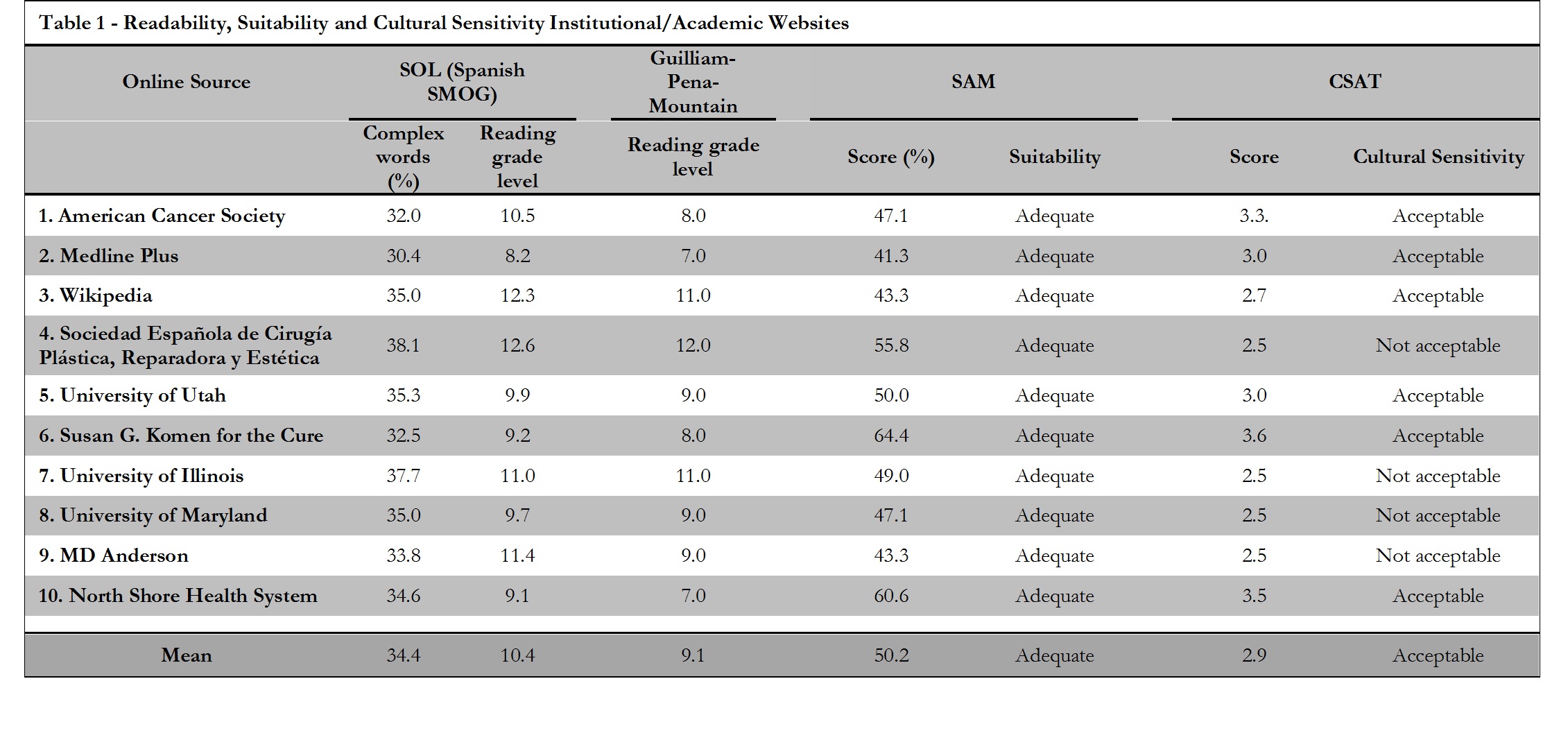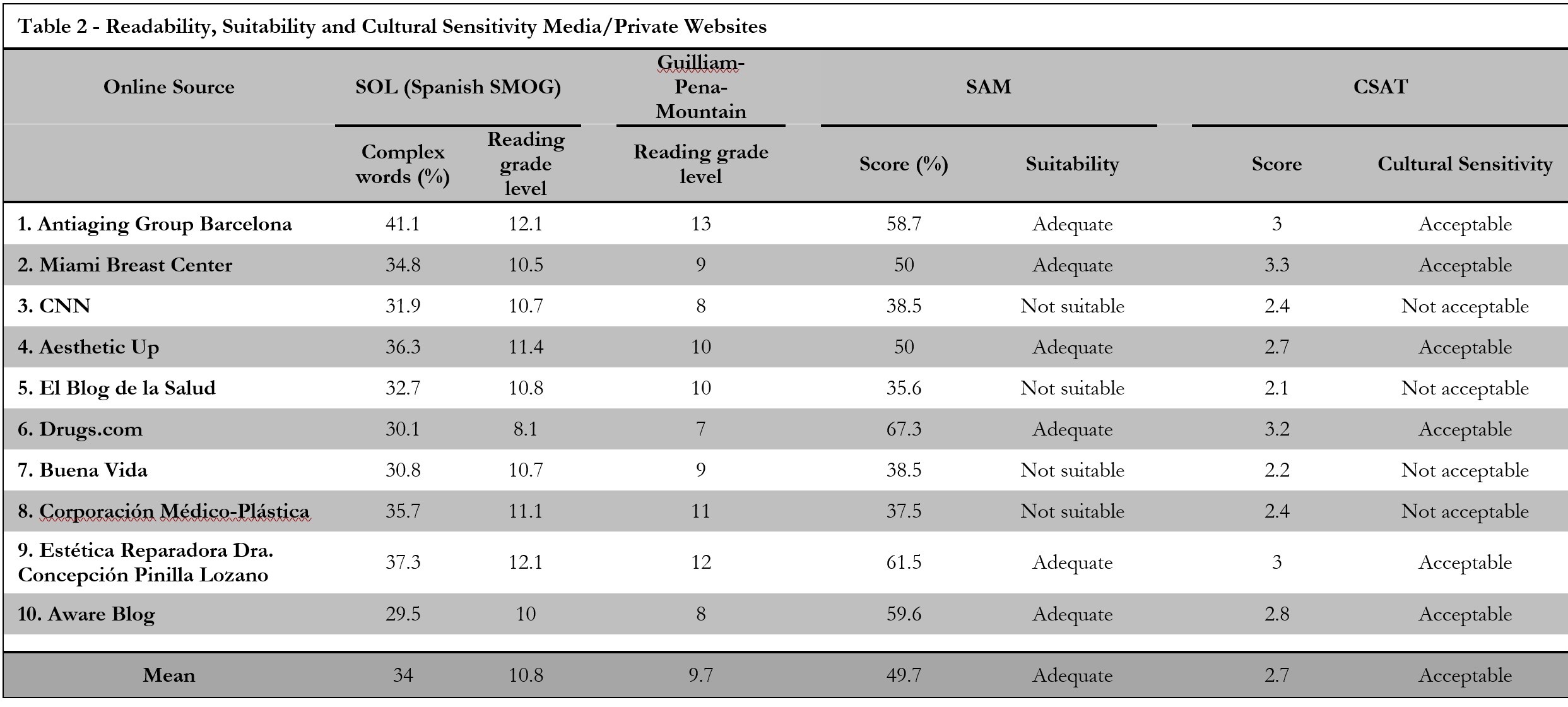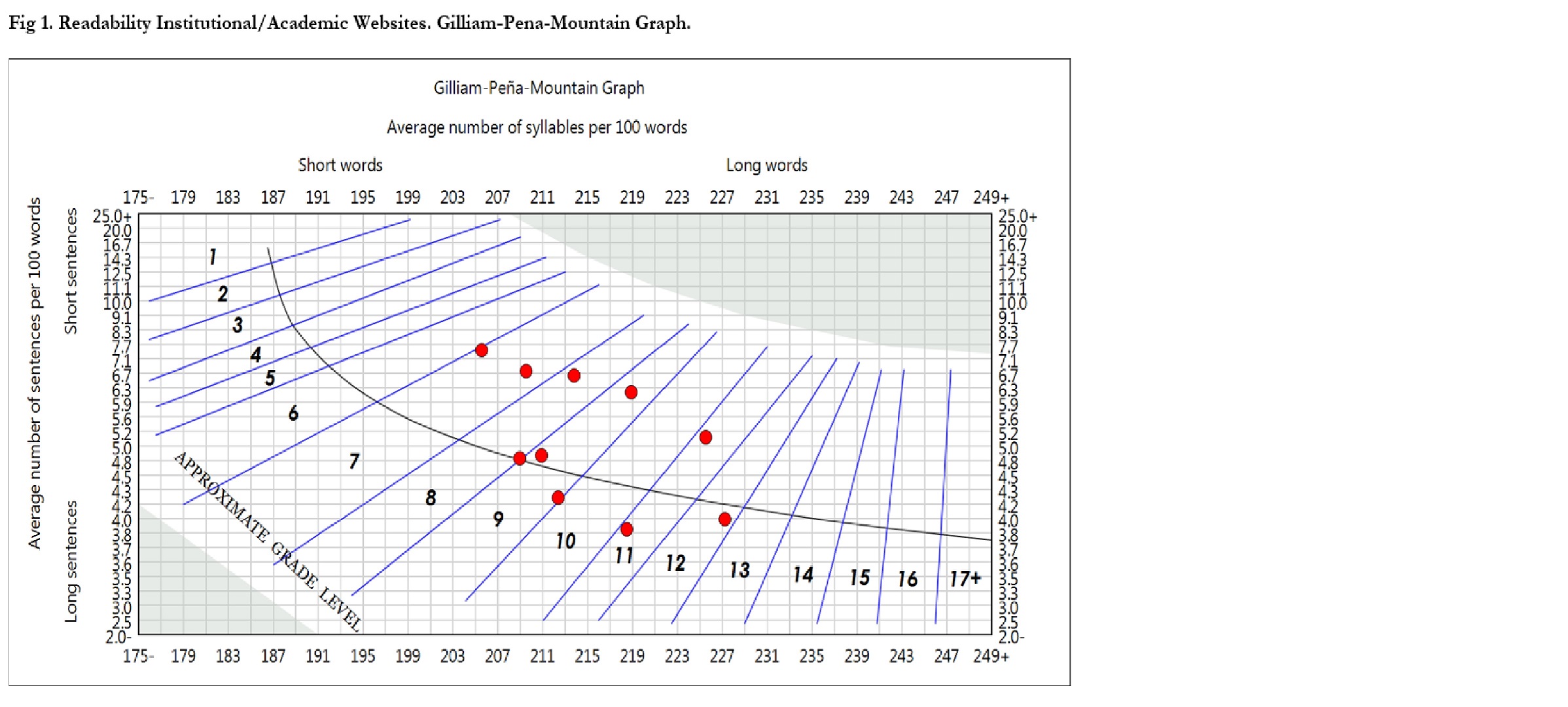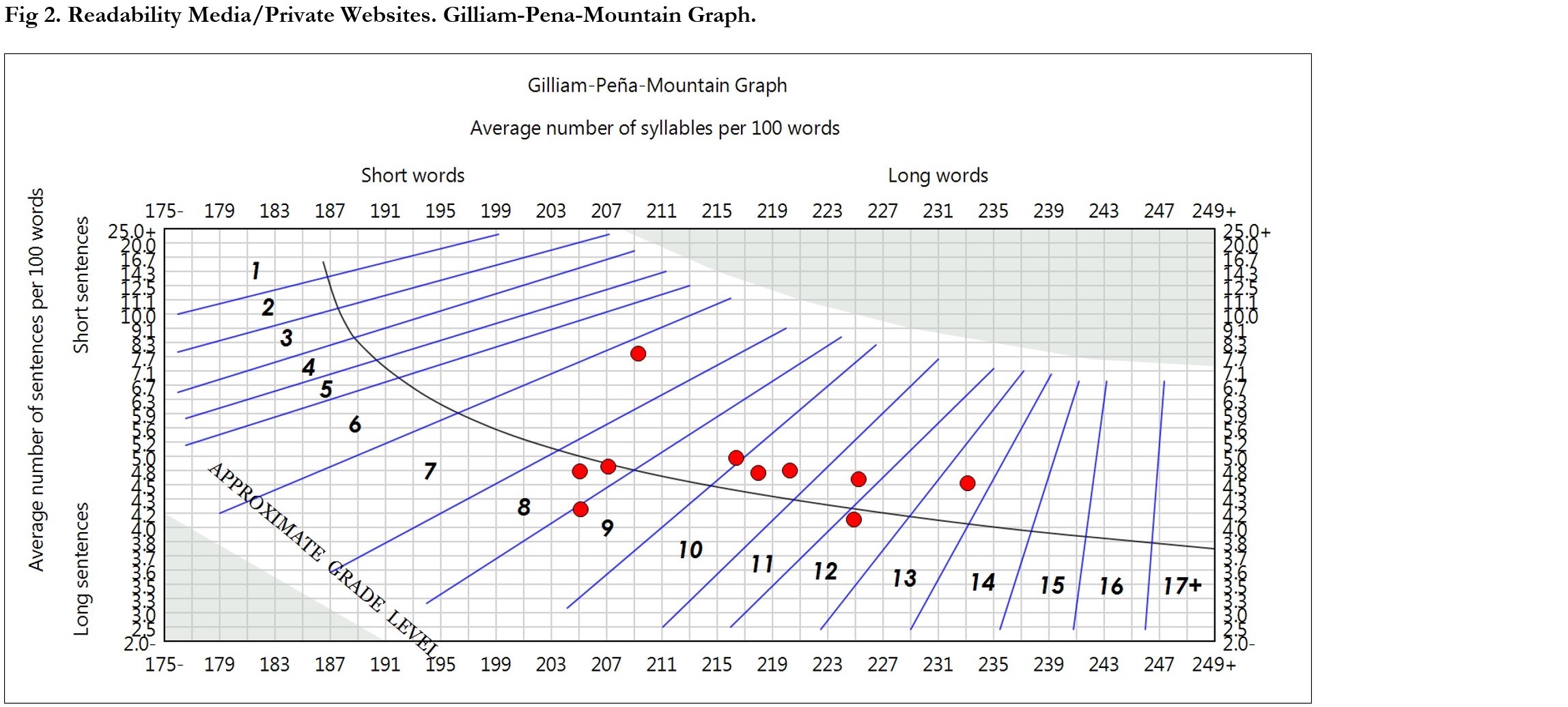Literacy Analysis of Spanish Online Resources for Breast Reconstruction
Bao Tran, MD.
Beth Israel Deaconess Medical Center, Boston, MA, USA.
BACKGROUND: Health literacy studies indicate that low literacy can prevent patients from actively participating in health discussion and decision-making process. The Spanish speaking population is particularly vulnerable due to language barriers in addition to low health literacy. There is a paucity of research examining the mismatch between Spanish speaking patient´s literacy and the demand of existing health materials. The aim of this study is to evaluate breast reconstruction online resources available for the Spanish speaking population in the United States through metrics developed for readability, suitability and cultural sensitivity.
METHODS: Search for the term "Reconstrucción de seno" (Translation: Breast Reconstruction) was conducted using Google. The 10 highest ranked Institutional/academic websites (e.g., government entities, academic centers, nonprofit organizations), and 10 media/private websites (e.g., blogs, news sites, private organizations) were identified. Each website was assessed for readability (SOL, Modified Simple Measure of Gobbledygook for Spanish and Guilliam-Pena-Mountain), suitability (SAM, Suitability Assessment of Materials), and cultural sensitivity (CSAT, Cultural Sensitivity Assessment Tool). Scores were analyzed by each website and overall. SAM and CSAT were evaluated by two independent raters; Fleiss Kappa score was obtained to ensure inter-rater reliability.
RESULTS: Readability analysis revealed no significant reading grade level difference between institutional/academic and media/private websites (SOL 10.4 and 10.8, p=0.78; Guilliam-Pena.Mountain 9.1 and 9.7, p=0.21 respectively). Similarly, no difference was found in suitability analysis between institutional/academic and media/private websites, 50.2% vs. 49.7% (p=0.92) respectively; both corresponded to adequate level. Cultural sensitivity evaluation yielded adequate score for both types of websites 2.9 vs. 2.7 with no statistically significant difference observed (p=0.31). Inter-rater reliability was substantial for all analysis (k<0.61).
CONCLUSIONS: Available breast reconstruction online resources for the Spanish-speaking population are too difficult to understand in terms of readability. There was limited availability of institutional/academic online resources in Spanish. This demonstrates the need for healthcare entities to generate more comprehensible literature directed to Spanish speaking population of the United States. 



Back to 2017 Program




